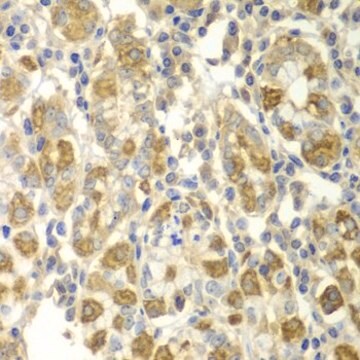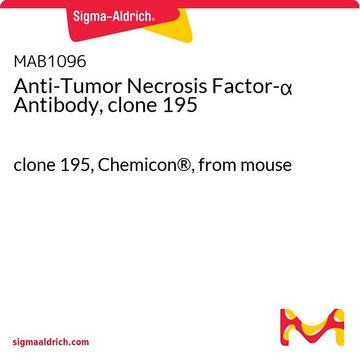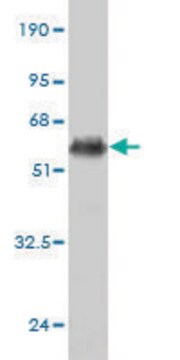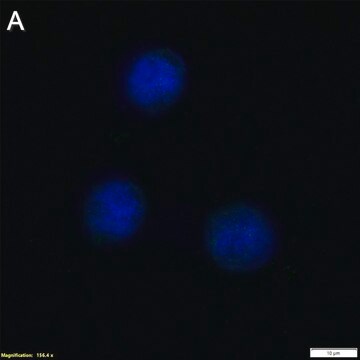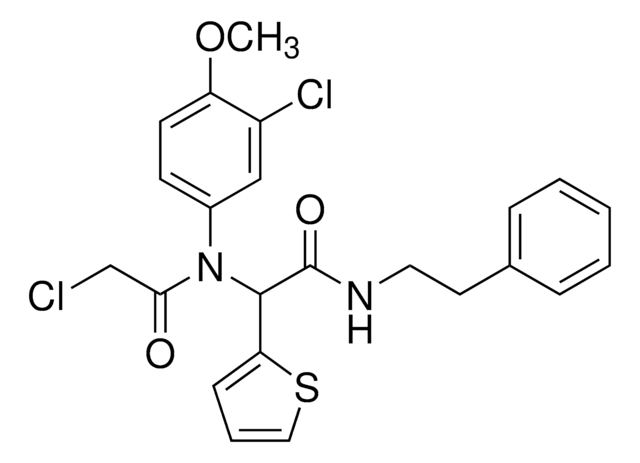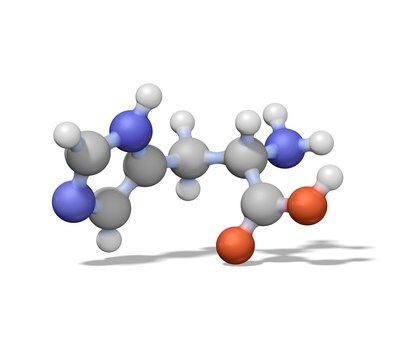Opis ogólny
Jesteśmy zaangażowani w dostarczanie bardziej ekologicznych produktów alternatywnych, które są zgodne z co najmniej jedną z 12 zasad zielonej chemii. To przeciwciało nie zawiera konserwantów, jest produkowane bez szkody dla zwierząt i wyjątkowo stabilne, aby umożliwić wysyłkę i przechowywanie w razie potrzeby, a tym samym jest zgodne z "Zapobieganiem powstawaniu odpadów", "Projektowaniem bezpieczniejszych chemikaliów" i "Projektowaniem pod kątem efektywności energetycznej".
Kliknij tutaj, aby uzyskać więcej informacji.
Przeciwciała 10889 reprezentują całkowicie nową generację rekombinowanych przeciwciał monoklonalnych. Każde przeciwciało 10889 jest wytwarzane przy użyciu naszego zastrzeżonego rekombinowanego systemu ekspresji, oczyszczane do jednorodności i precyzyjnie dozowane w celu uzyskania solidnej i wysoce powtarzalnej spójności między partiami. Do użytku badaczy udostępniane są wyłącznie klony o najwyższej wydajności. Każde przeciwciało jest zatwierdzone pod kątem wysokiej swoistości i powinowactwa w wielu zastosowaniach, w tym w najczęściej używanym zastosowaniu. Przeciwciała 10889 są niezawodnie dostępne i gotowe do wysyłki, gdy są potrzebne.
Specyficzność
Klon 3B20 to rekombinowane królicze przeciwciało monoklonalne 10889, które specyficznie wykrywa TNF . Jego celem jest epitop w domenie zewnątrzkomórkowej.
Immunogen
Rekombinowany fragment znakowany His, odpowiadający rozpuszczalnej formie ludzkiego TNF o pełnej długości.
Zastosowanie
Testy kontroli jakości
Oceniane metodą Western Blotting z rekombinowanym ludzkim TNF .
Analiza Western Blotting: Rozcieńczenie 1:1000 tego przeciwciała wykryło znakowaną His rekombinowaną rozpuszczalną formę ludzkiego TNF.
Testowane aplikacje
Affinity Binding Assay: Reprezentatywna partia tego przeciwciała wiązała TNF z KD 1,9 x 10-7 w teście wiązania powinowactwa.
Analiza immunoenzymatyczna (ELISA): Reprezentatywna partia tego przeciwciała wykryła ludzki rekombinowany TNF w aplikacji ELISA.
Analiza immunocytochemiczna: Rozcieńczenie 1:100 z reprezentatywnej partii wykryło TNF w komórkach THP-1.
Uwaga: Rzeczywiste optymalne rozcieńczenia robocze muszą być określone przez użytkownika końcowego jako próbki, a warunki eksperymentalne mogą się różnić w zależności od użytkownika końcowego.
Opis wartości docelowych
Czynnik martwicy nowotworów (UniProt: P01375; znany również jako Cachectin, TNF-alfa, Tumor necrosis factor ligand superfamily member 2, TNF-a) jest kodowany przez gen TNF (znany również jako TNFA, TNFSF2) (Gene ID: 7124) u człowieka. TNF jest cytokiną prozapalną, która jest wytwarzana głównie przez aktywowane makrofagi i komórki NK. Nierozszczepiona cząsteczka ma domenę cytoplazmatyczną (aa 1-35), domenę transbłonową (aa 36-56) i domenę zewnątrzkomórkową (aa 57-233). Po syntezie jest rozszczepiany na 6 różnych łańcuchów: Czynnik martwicy nowotworów, forma błonowa (NTF); domena wewnątrzkomórkowa 1 (ICD1; aa 1-39); domena wewnątrzkomórkowa 2 (ICD2; aa 1-35); domena C 1; domena C 2; i czynnik martwicy nowotworów, forma rozpuszczalna (aa 77-233). Forma rozpuszczalna pochodzi z formy błonowej poprzez przetwarzanie proteolityczne. Podczas syntezy TNF przemieszcza się do błony komórkowej, gdzie enzym konwertujący TNF (TACE) uwalnia związaną z błoną cząsteczkę 26 kDa do środowiska zewnątrzkomórkowego jako białko 17 kDa. Zarówno związany z błoną, jak i uwolniony TNF są aktywne, ale w zależności od ich lokalizacji pełnią różne funkcje. TNF pośredniczy w swoich działaniach biologicznych poprzez wiązanie się z receptorami TNF typu I i II (TNFR1 i TNFRII). Transbłonowy TNF wywiera swoją funkcję biologiczną w kontakcie komórka-komórka, co różni się od właściwości rozpuszczalnego TNF, który działa w miejscach odległych od komórek wytwarzających TNF. TNF jest silnym pirogenem, który powoduje gorączkę poprzez bezpośrednie działanie lub stymulację wydzielania interleukiny-1. Został zaangażowany w indukcję kacheksji. W pewnych warunkach może stymulować proliferację komórek, a także indukować ich różnicowanie. Wiadomo, że upośledza funkcję limfocytów T regulatorowych (Treg) u osób z reumatoidalnym zapaleniem stawów poprzez defosforylację FOXP3. Zwiększa ekspresję fosfatazy białkowej 1 (PP1), która defosforyluje kluczową resztę Ser-418 FOXP3 i inaktywuje ją, prowadząc do wadliwej funkcji komórek Treg. To rekombinowane przeciwciało monoklonalne ZooMAb10889, generowane przez naszą zastrzeżoną technologię, oferuje znacznie zwiększoną swoistość, powinowactwo, powtarzalność i stabilność w porównaniu z konwencjonalnymi przeciwciałami monoklonalnymi. (Ref.: Nie, H., et al. (2013). Nat. Med. 19(3); 322-328; Horiuchi, T., et al. (2010). Rheumatology (Oxford). 49(7); 125-1228).
Postać fizyczna
Oczyszczone rekombinowane królicze przeciwciało monoklonalne IgG, liofilizowane w PBS z 5% trehalozą, o normalnym wyglądzie gruboziarnistej lub półprzezroczystej żywicy. Składniki PBS/trehaloza w preparacie ZooMAb mogą mieć wygląd półstały (żel przypominający kulki) po liofilizacji. Jest to zjawisko normalne. Należy postępować zgodnie z zalecaną procedurą rekonstytucji zawartą w arkuszu danych, aby rozpuścić półstały, przypominający kulki materiał o wyglądzie żelu. Otrzymany roztwór przeciwciała jest całkowicie stabilny i funkcjonalny, co potwierdzają pełne testy funkcjonalne. Nie zawiera biocydów ani konserwantów, takich jak azydek, ani żadnych produktów ubocznych pochodzenia zwierzęcego. Większe opakowania są dostarczane jako wielokrotności 25 μL.
Przechowywanie i stabilność
Zaleca się przechowywanie liofilizowanego produktu w temperaturze 2-8°C. Przed rekonstytucją fiolki należy krótko mikrowirować, aby odwirować materiał na dno fiolki. Każdą fiolkę należy odtworzyć, dodając 25 μl przefiltrowanej wody laboratoryjnej lub PBS. Odtworzone przeciwciała można przechowywać w temperaturze 2-8°C lub -20°C w celu długotrwałego przechowywania. Unikać wielokrotnego zamrażania.
Informacje prawne
ZooMAb is a registered trademark of Merck KGaA, Darmstadt, Germany
Oświadczenie o zrzeczeniu się odpowiedzialności
O ile nie określono inaczej w naszym katalogu lub innej dokumentacji firmy dołączonej do produktu(-ów), nasze produkty są przeznaczone wyłącznie do użytku badawczego i nie mogą być wykorzystywane do żadnych innych celów, w tym między innymi do nieautoryzowanych zastosowań komercyjnych, zastosowań diagnostycznych in vitro, zastosowań terapeutycznych ex vivo lub in vivo lub jakiegokolwiek rodzaju konsumpcji lub zastosowania u ludzi lub zwierząt.
Ta strona może zawierać tekst przetłumaczony maszynowo.

